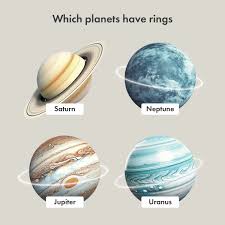Stamp: Lunar Roving Vehicle, Lunar Module lifts off the Moon (Equatorial Guinea 1972)
Lunar Roving Vehicle, Lunar Module lifts off the Moon (Equatorial Guinea 1972)
28 January (Equatorial Guinea ) within release Apollo 15 goes into circulation Stamp Lunar Roving Vehicle, Lunar Module lifts off the Moon face value 10 Equatorial Guinean peseta
| Stamp Lunar Roving Vehicle, Lunar Module lifts off the Moon in catalogues | |
|---|---|
| Michel: | Mi:GQ A22 |
Stamp is horizontal format.
gold foilAlso in the issue Apollo 15:
- Stamp - Rocket, Astronauts face value 1;
- Stamp - Lunar rover, lander face value 3;
- Stamp - Lunar rover face value 5;
- Stamp - Astronauts face value 8;
- Stamp - Lander face value 10;
- Stamp - Lunar mini satellite face value 15;
- Stamp - Film recovery face value 25;
- Souvenir Sheet - Lunar rover, stamps from the USA face value 25+200;
- Souvenir Sheet - Moon car face value 50+250;
- Stamp - Rocket, Astronauts face value 1;
- Stamp - Lunar Roving Vehicle Assembly, Lander face value 3;
- Stamp - Lunar Roving Vehicle face value 5;
- Stamp - Astronauts face value 8;
- Stamp - Lunar Roving Vehicle, Lunar Module lifts off the Moon face value 10;
- Stamp - Apollo-Spacecraft, Lunar Subsatellite face value 15;
- Stamp - Film recovery face value 25;
- Stamp - Moon car face value 50+250;
- Stamp - Lunar rover, stamps from the USA face value 25+200;
Stamp Lunar Roving Vehicle, Lunar Module lifts off the Moon it reflects the thematic directions:
A vehicle (from Latin: vehiculum) is a mobile machine that transports people or cargo. Typical vehicles include wagons, bicycles, motor vehicles (motorcycles, trucks, buses), railed vehicles (trains, trams), watercraft (ships, boats), aircraft and spacecraft. Land vehicles are classified broadly by what is used to apply steering and drive forces against the ground: wheeled, tracked, railed or skied. ISO 3833-1977 is the standard, also internationally used in legislation, for road vehicles types, terms and definitions.
The Moon is Earth's only natural satellite. It orbits at an average distance of 384,400 km (238,900 mi), about 30 times the diameter of Earth. Tidal forces between Earth and the Moon have over time synchronized the Moon's orbital period (lunar month) with its rotation period (lunar day) at 29.5 Earth days, causing the same side of the Moon to always face Earth. The Moon's gravitational pull – and to a lesser extent, the Sun's – are the main drivers of Earth's tides.
A spacecraft is a vehicle that is designed to fly and operate in outer space. Spacecraft are used for a variety of purposes, including communications, Earth observation, meteorology, navigation, space colonization, planetary exploration, and transportation of humans and cargo. All spacecraft except single-stage-to-orbit vehicles cannot get into space on their own, and require a launch vehicle (carrier rocket).
A planet is a large, rounded astronomical body that is generally required to be in orbit around a star, stellar remnant, or brown dwarf, and is not one itself. The Solar System has eight planets by the most restrictive definition of the term: the terrestrial planets Mercury, Venus, Earth, and Mars, and the giant planets Jupiter, Saturn, Uranus, and Neptune. The best available theory of planet formation is the nebular hypothesis, which posits that an interstellar cloud collapses out of a nebula to create a young protostar orbited by a protoplanetary disk. Planets grow in this disk by the gradual accumulation of material driven by gravity, a process called accretion.





